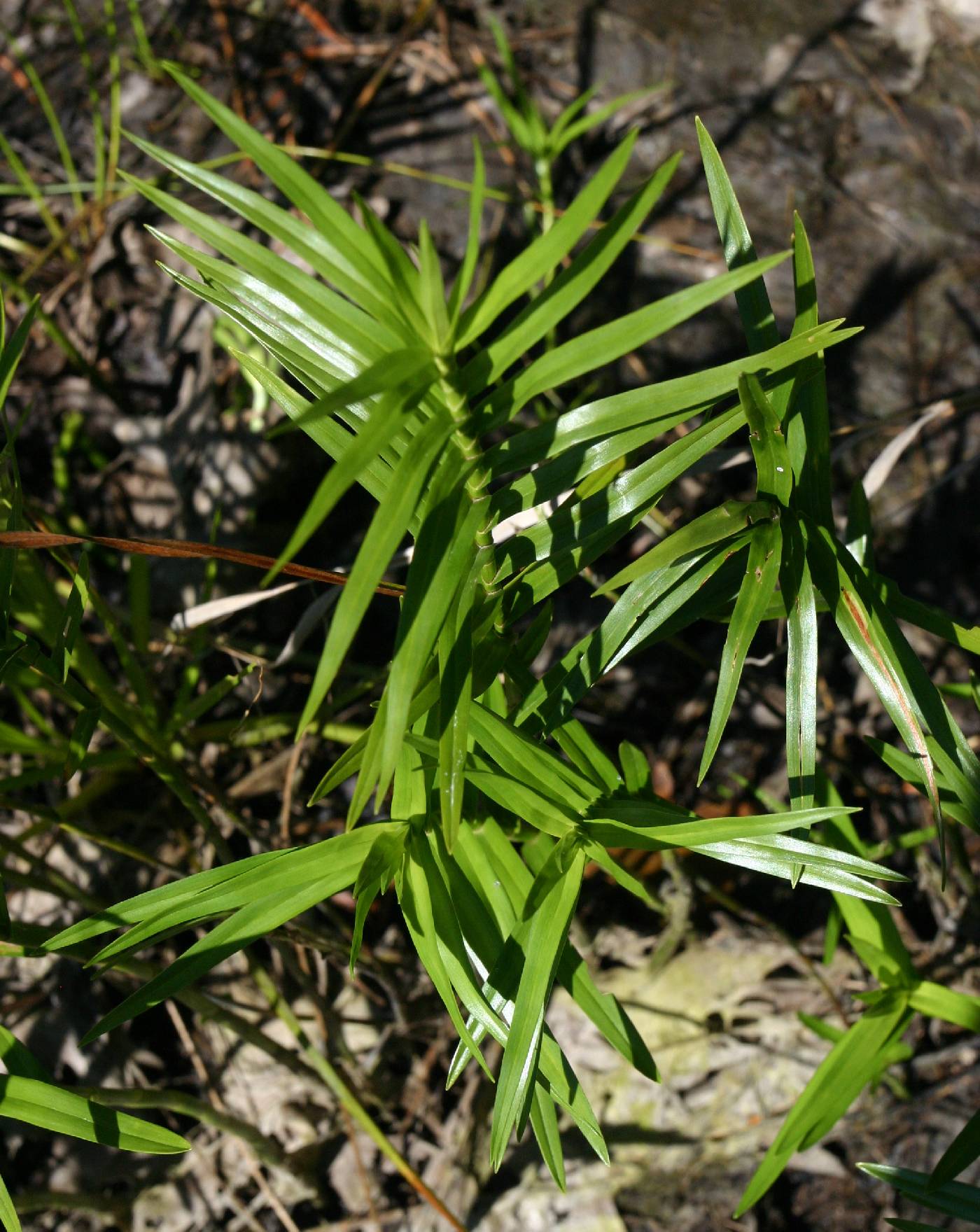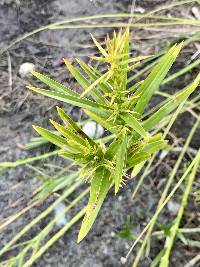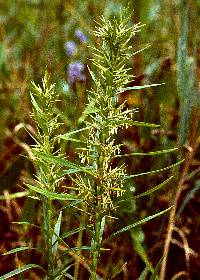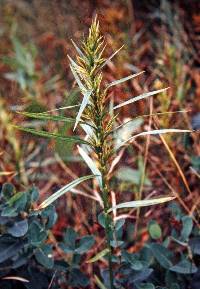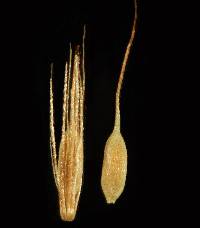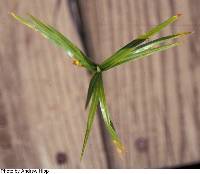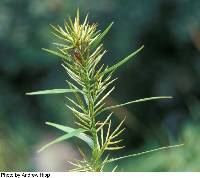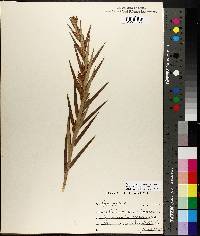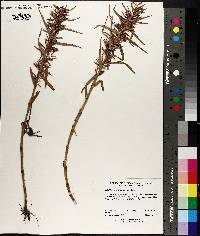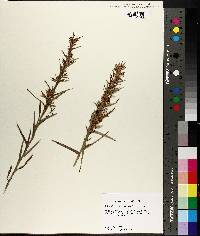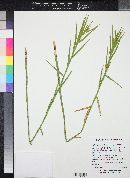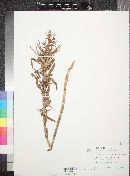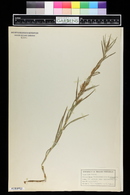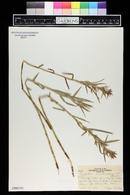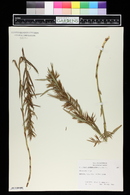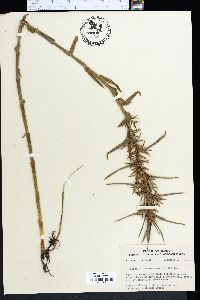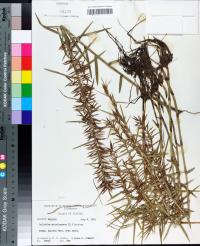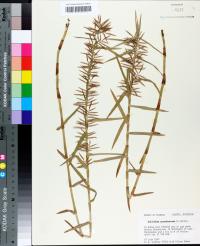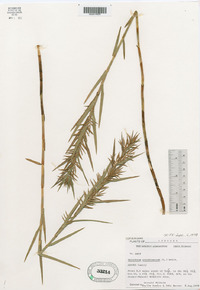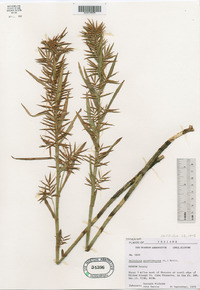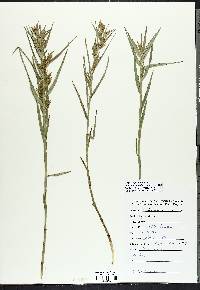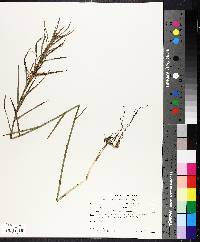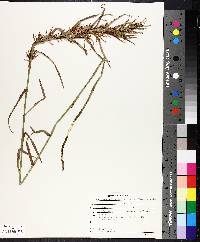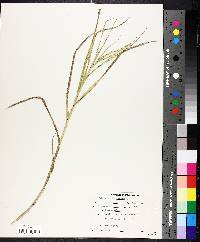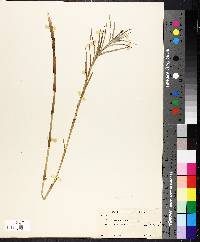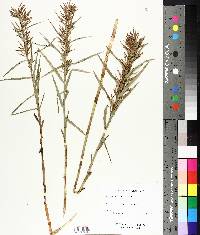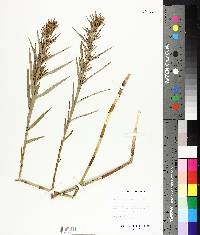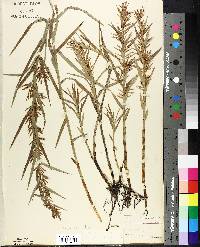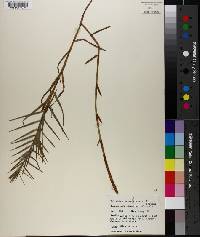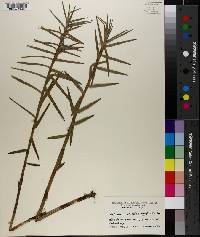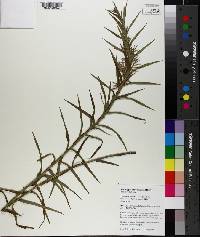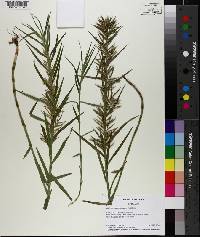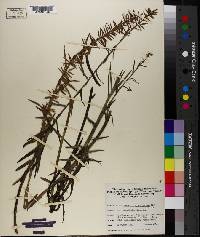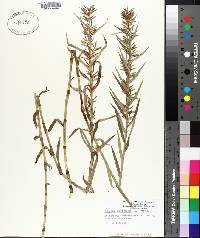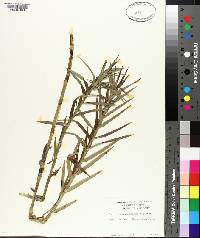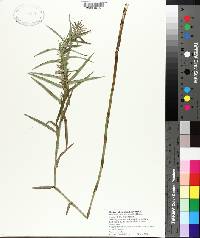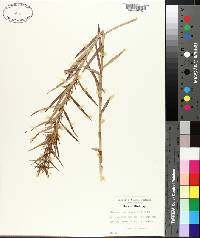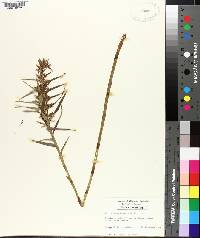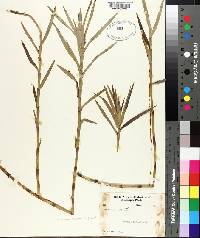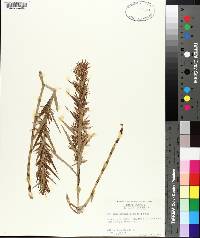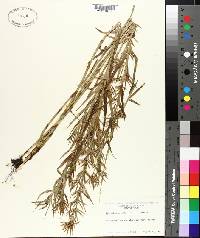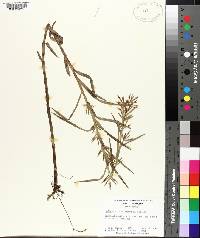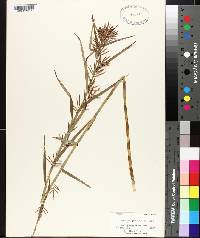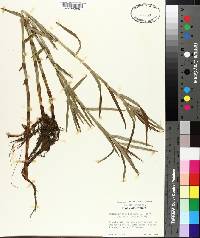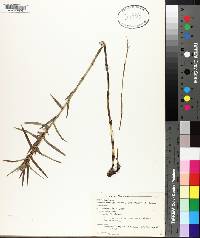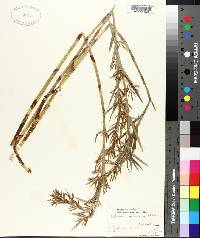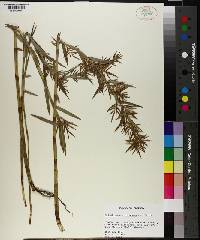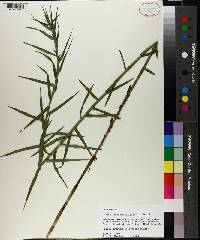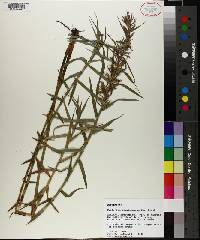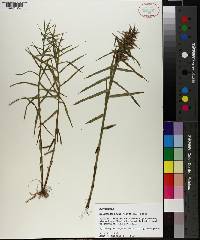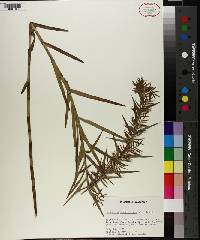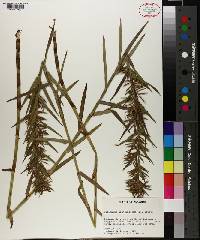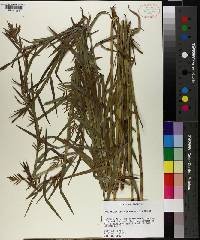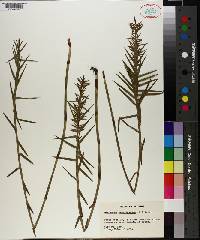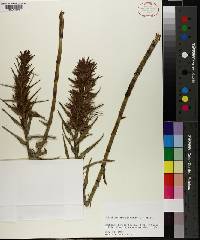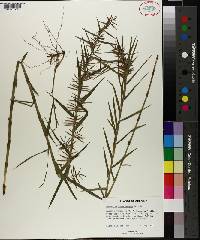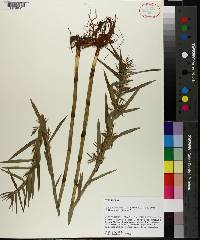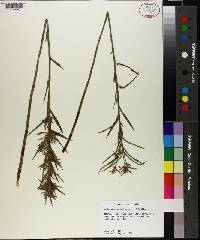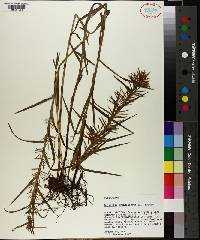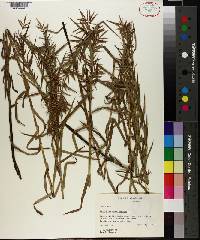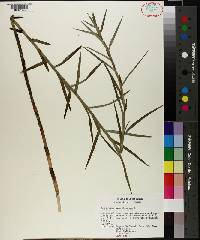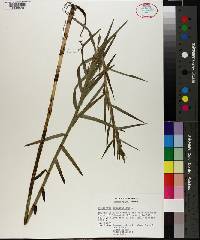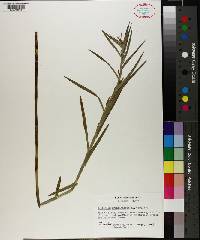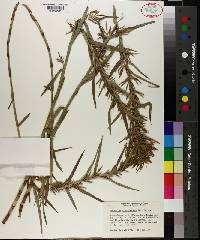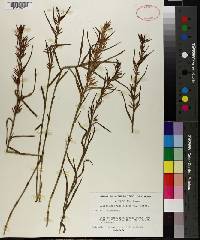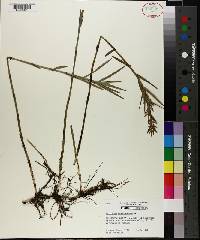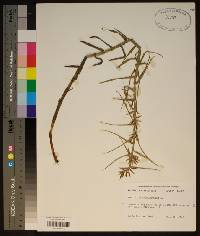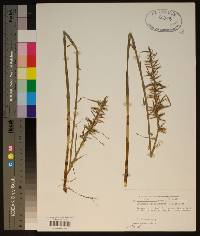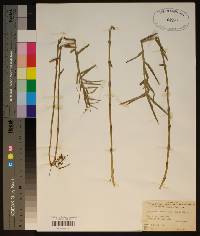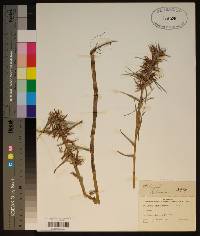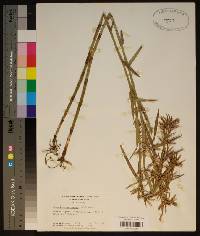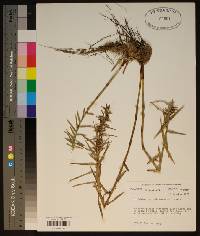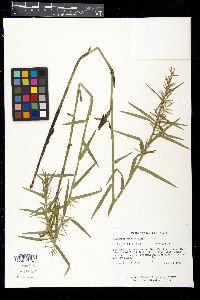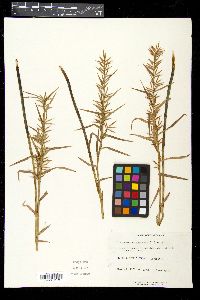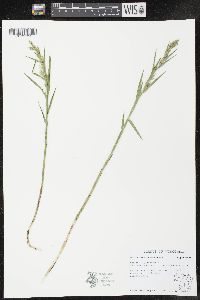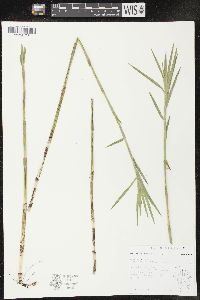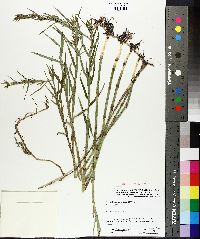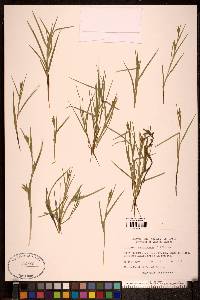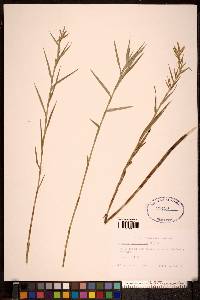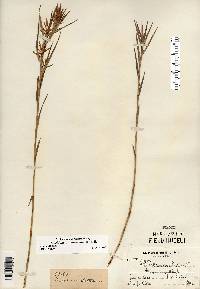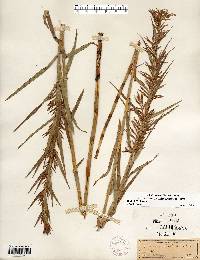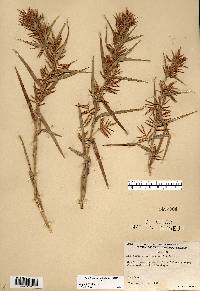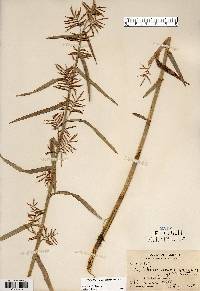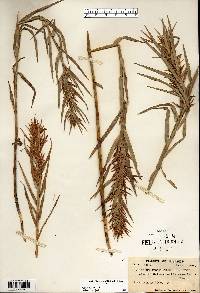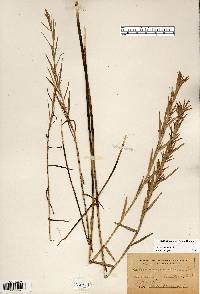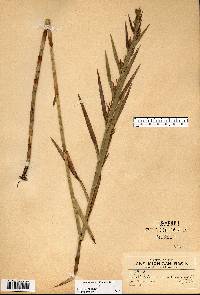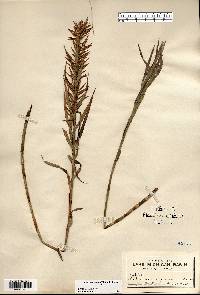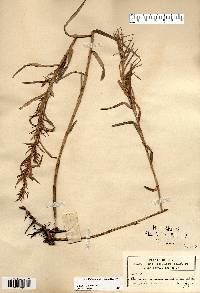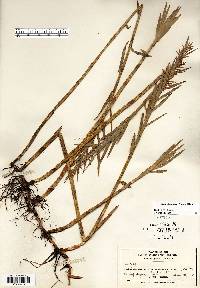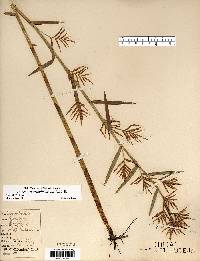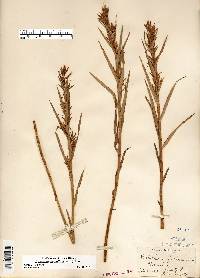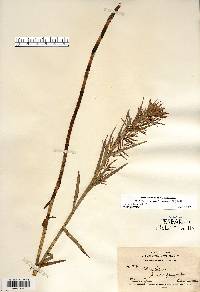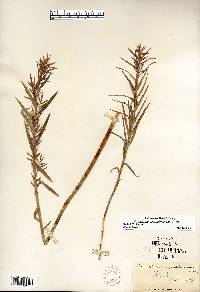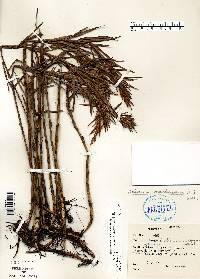
|
|
|
|
Family: Cyperaceae
Three-Way Sedge, more...threeway sedge
|
Rhizomes 2-5 mm thick; internodes 2-5 cm. Culms 2-14, erect, unbranched, jointed, aphyllo-podic, terete, 20-100 cm × 2-5 mm; internodes hollow. Leaves: sheaths 2-14, bladeless, green, often with white dots in intervenal areas, with brown-hyaline 1-2 mm margin at mouth, firm; blades 3-15 per culm, 3-ranked, ascending, thick, 4-15 cm × 1-8 mm, ± leathery, glabrous; distal 5-20 leaves serving as bracts. Inflorescences 6-30 cm; spikes 1-17, in sheath axils, 2-5 cm. Spikelets 2-ranked, appressed-ascending to ascending-spreading, linear-lanceolate, flat, 1.5-3 cm × 1.2-2.5 mm; rachilla winged, wings hyaline, usually containing spongy tissue proximally, occasionally ciliate; scales decurrent, spongy-based, 5-9.5 × 1.4-2.4 mm, each subtending flower. Flowers 2-ranked, sessile; scales green with gold-hyaline margins; perianth bristles 6-9, 4-7.5 mm, stiff; stamens 3, longer than perianth bristles; pistils 1, 2-carpellate; styles 1, 3.8-6 mm, base persistent on achene; stigmas 2, 1-3.8 mm. Achene stipitate, 2-4 × 0.8-1.1 mm (excluding style base), shorter than perianth bristles. Perennial herb with rhizomes 20 cm - 1 m tall Inflorescence: consisting of short-stalked, axillary spikes, 6 - 30 cm long, subtended by leaf-like bracts. Spikes one to seventeen, in axils of sheaths, 1 - 5 cm long, consisting of three to ten spikelets. Flowers: two-ranked, stalkless, minute, subtended by a floral scale, lacking sepals and petals, with six to nine bristles. Bristles stiff, 4 - 7.5 mm long, slightly longer than achene. Stamens three, exserted. Pistil one. Style one, two-cleft. Stigmas two, 1 - 4 mm long. Fruit: a one-seeded achene, short-stalked, 2 - 4 mm long, about 1 mm wide, biconvex, beaked with the persistent style. Seed with a thin, non-adherent wall. Spikelets: two-ranked, 1 - 3 cm long, 1 - 2.5 mm wide, flat, narrowly lance-shaped, with a winged axis. Scales four to eight, spirally arranged and overlapping, pointed, 5 - 9.5 mm long, 1.5 - 2.5 mm wide, ribbed. Lower leaves: consisting of bladeless sheaths, two to fourteen, firm, green, white-dotted, with a 1 - 2 mm wide margin at the mouth. Upper leaves: three to fifteen per culm, three-ranked, alternate, ascending, thick, 4 - 15 cm long, 1 - 8 mm wide, flat, linear, parallel-veined, with a sheathing base that encloses the stem. The uppermost five to twenty leaves reduced to bracts. Culms: two to fourteen, upright, unbranched, 20 cm - 1 m long, 2 - 5 mm wide, circular in cross-section, jointed, internodes hollow. Similar species: No information at this time. Flowering: July to late August Habitat and ecology: Bogs and marshes. Occurence in the Chicago region: native Etymology: The origin of Dulichium is unknown. Arundinaceum means reed-like. Author: The Morton Arboretum Erect, 3-10 dm; lvs numerous, the lower bladeless, the upper sheaths often overlapping; blades mostly 5-15 cm נ2.5-8 mm; peduncles scarcely exserted; spikes 1-3 cm; spikelets 10-25 mm; scales 5-8 mm, narrow, acuminate, several-nerved; achene short- stipitate, 2.5-3 mm, beaked with the long, slender, persistent style; 2n=32. Swamps and marshes; Nf. to Minn., s. to Fla. and Tex.; B.C. to Calif. and Mont. Gleason, Henry A. & Cronquist, Arthur J. 1991. Manual of vascular plants of northeastern United States and adjacent Canada. lxxv + 910 pp. ©The New York Botanical Garden. All rights reserved. Used by permission. |
This project was made possible in part by the Institute of Museum and Library Services [MG-70-19-0057-19].
Powered by Symbiota

